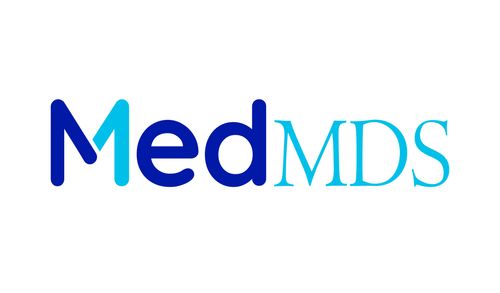It’s easy to think of history as something that happened in the past, but the reality is that many of the diseases and illnesses of the past are still present today. Rethinking history can help us understand how these diseases are still relevant and how we can use our knowledge to make informed decisions about our health. By looking at the past, we can find ways to prevent and treat diseases that still affect us today. Let’s take a closer look and see how we can use history to improve our health!
Introduction: Old Diseases – What Do We Know?
Hey there, history buffs! Have you ever wondered about the old diseases that plagued our ancestors? From the Black Death to smallpox, these illnesses were once a major threat to humanity. But what do we know about them today? As it turns out, old diseases are still relevant in the modern world. For starters, studying these diseases can help us understand how they spread and how to prevent future outbreaks. It can also shed light on the evolution of medicine and how far we’ve come in terms of treating and curing diseases. Additionally, some old diseases are still around today, albeit in a different form. For example, the flu has been around for centuries, but the strains we see today are constantly evolving. By understanding the history of these diseases, we can better prepare for the future and stay ahead of potential health crises. So let’s take a trip down memory lane and learn about the old diseases that shaped our world. Who knows, it might just help us prevent the next big outbreak.
Examining How Old Diseases Are Still Wreaking Havoc
It’s easy to think that old diseases are a thing of the past, but the truth is that many of them are still wreaking havoc today. Take tuberculosis, for example. This bacterial infection has been around for centuries, and while it was once thought to be under control, it’s now making a comeback. In fact, tuberculosis is one of the top 10 causes of death worldwide. Another old disease that’s still relevant today is leprosy. While it’s not as common as it once was, leprosy still affects thousands of people each year. And let’s not forget about the bubonic plague, which killed millions of people in the Middle Ages and still exists in some parts of the world today. So why are these old diseases still causing problems? There are a few reasons, including poor healthcare access, lack of education about prevention, and antibiotic resistance. It’s important to remember that just because a disease is old doesn’t mean it’s no longer a threat. By examining these old diseases and understanding how they’re still relevant today, we can work towards finding solutions to prevent their spread and keep ourselves and our communities healthy.
Exploring the Causes Behind the Resurgence of Old Diseases
It’s alarming to see old diseases making a comeback, but it’s important to understand the reasons behind their resurgence. One major factor is the decline in vaccination rates. When people don’t get vaccinated, they become more susceptible to diseases like measles, mumps, and rubella. Another cause is the increase in global travel, which allows diseases to spread more easily across borders. Climate change also plays a role, as it can create conditions that are favorable for disease-carrying insects like mosquitoes. Additionally, antibiotic resistance is a growing problem, making it harder to treat bacterial infections. To combat these issues, it’s crucial to prioritize vaccination efforts and invest in research to develop new treatments and preventions. We also need to address the root causes of climate change and work towards more sustainable practices. By understanding the causes behind the resurgence of old diseases, we can take steps to prevent their spread and protect public health.
How Can We Better Prepare for and Treat These Diseases?
As we dive deeper into the history of diseases, it’s becoming increasingly clear that many old diseases are still relevant today. However, the good news is that we have come a long way in terms of medical advancements and technology. We can now better prepare for and treat these diseases by adopting a more proactive approach. This includes investing in research and development, creating awareness, and implementing preventative measures. For instance, we can encourage people to get vaccinated, maintain good hygiene, and adopt a healthy lifestyle. Additionally, we can leverage technology to improve diagnosis and treatment. For example, telemedicine can help reach patients in remote areas, and AI can help analyze large amounts of data to identify patterns and predict outbreaks. With a collaborative effort from healthcare professionals, policymakers, and the general public, we can better prepare for and treat old diseases that are still relevant today. Let’s embrace the advancements we have made and continue to work towards a healthier future.
What Is Being Done to Contain These Outbreaks?
It’s easy to feel overwhelmed when we hear about outbreaks of old diseases like measles or polio. But it’s important to remember that there are many people working to contain these outbreaks and keep us safe. Public health officials are monitoring the spread of these diseases and working to identify and isolate cases as quickly as possible. They’re also working to educate the public about the importance of vaccinations and encouraging people to get vaccinated if they haven’t already. Researchers are working on developing new vaccines and treatments for these diseases, and healthcare workers are on the front lines, treating patients and preventing further spread of the diseases. As individuals, we can do our part by staying informed, getting vaccinated, and following basic hygiene practices like washing our hands regularly. By working together, we can help contain these outbreaks and protect ourselves and our communities from these old, but still very relevant, diseases.
Bringing It All Together: Making Sure History Doesn’t Repeat Itself

It’s important to recognize that history has a tendency to repeat itself if we don’t learn from it. This is especially true when it comes to old diseases that are still relevant today. We need to bring together our knowledge of the past with our current understanding of medicine and public health in order to prevent outbreaks of diseases that we thought were long gone. This means investing in research and development of new vaccines and treatments, as well as educating the public on the importance of preventative measures like hand washing and vaccinations. It also means being aware of the social and economic factors that can contribute to the spread of disease, such as poverty and lack of access to healthcare. By bringing it all together, we can ensure that we don’t make the same mistakes of the past and that we are better equipped to handle any future outbreaks that may occur. So let’s learn from history and work together to create a healthier and safer future for all.
Conclusion: Rethinking History to Better Prepare for the Future
In conclusion, rethinking history is crucial to better prepare for the future, especially when it comes to diseases. As we have seen, old diseases that were once thought to be eradicated are still relevant today. By looking back at how these diseases were handled in the past, we can learn valuable lessons that can help us prevent and treat them in the future. It is also important to acknowledge the role that history plays in shaping our current healthcare system and to continue to question and improve it. By doing so, we can ensure that we are better equipped to handle any future health crisis that may arise. So let us not forget the lessons of the past and use them to build a healthier and more resilient future.




